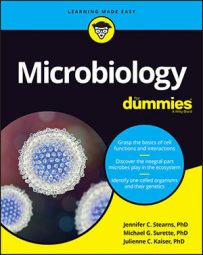Energy can’t be created or destroyed, so it has to be passed around. Within the cell, energy is reused and recycled very efficiently. The same is true outside the cell, where energy is stored in everything, including leaves and rocks on the ground. The trick is getting energy out from where it’s stored.
Another way of thinking about energy is to think about electrons, which are the negatively charged part of atoms. Electrons are essentially carriers of energy that are able to be conveniently passed from one molecule to another. So, for microbes, passing electrons around between molecules — called oxidation and reduction — is important for gathering energy.
Most of the energy generated for living comes from oxidation and reduction reactions. Oxidation used to be thought of as a molecule combining with oxygen (hence, its name), and reduction was the return of that molecule to its original state.
It’s actually all about the transfer of electrons from one substance to another. When electrons are given from substance A to substance B, A is the electron donor, which is oxidized, and B is the electron acceptor, which is reduced.
An easy way to remember this process is with the mnemonic OIL RIG, which stands for “Oxidation Is the Loss of electrons, and Reduction Is the Gain of electrons.”
When it comes to oxidation and reduction, keep in mind the following:
It’s not only about electrons. When a substance is oxidized, it loses electrons, but it can also lose a proton (H+). When a compound loses an electron and a proton, it’s actually losing a hydrogen atom (H). Likewise, when a substance is reduced, it can gain a proton.
There’s some give and take. Most substances are flexible and can act as an electron donor in one situation and an electron acceptor in another situation. But often each substance has a preference for one or the other.
Donors and acceptors come in pairs. If a substance is oxidized, the electrons lost don’t just hang around in solution but are transferred to an electron acceptor. This is called a redox reaction, because all instances of oxidation or reduction happen in pairs.
Redox reactions happen continuously, as long as electron donors and electron acceptors are available, and the energy obtained can power other reactions in the microbial cell. Whether the energy is to be stored for the short term or the long term determines what kind of molecule will be used to transfer this energy.

